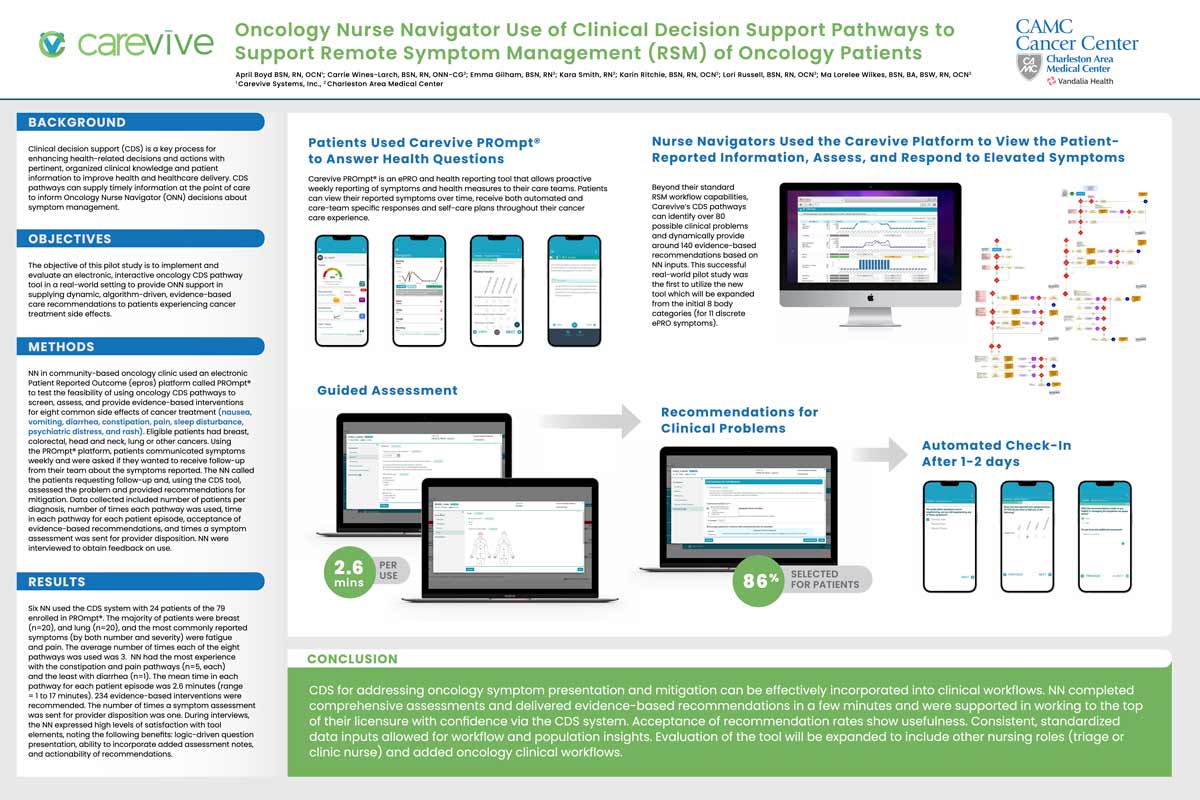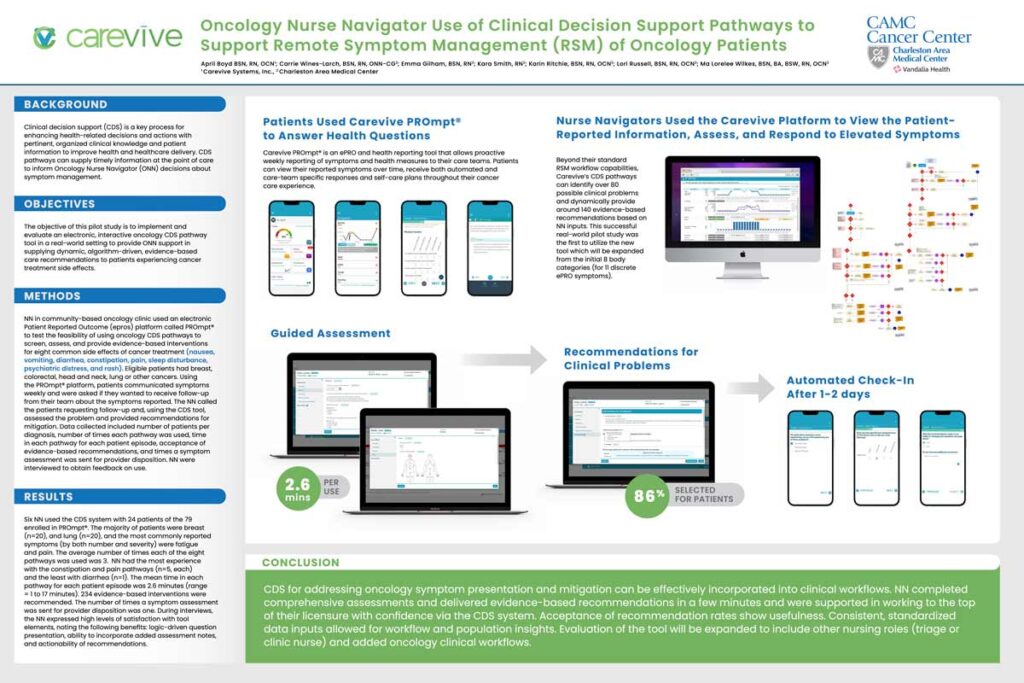
Authors:April Boyd BSN, RN, OCN1; Carrie Wines-Larch, BSN, RN, ONN-CG2; Emma Gilham, BSN, RN2; Kara Smith, RN2; Karin Ritchie, BSN, RN, OCN2; Lori Russell, BSN, RN, OCN2; Ma Lorelee Wilkes, BSN, BA, BSW, RN, OCN2
1 Carevive Systems, Inc., 2 Charleston Area Medical Center
Background
Clinical decision support (CDS) is a key process for enhancing health-related decisions and actions with pertinent, organized clinical knowledge and patient information to improve health and healthcare delivery. CDS pathways can supply timely information at the point of care to inform Oncology Nurse Navigator (ONN) decisions about symptom management.
Objectives
The objective of this pilot study is to implement and evaluate an electronic, interactive oncology CDS pathway tool in a real-world setting to provide ONN support in supplying dynamic, algorithm-driven, evidence-based care recommendations to patients experiencing cancer treatment side effects.
Methods
NN in community-based oncology clinic used an electronic Patient Reported Outcome (epros) platform called PROmpt® to test the feasibility of using oncology CDS pathways to screen, assess, and provide evidence-based interventions for eight common side effects of cancer treatment (nausea, vomiting, diarrhea, constipation, pain, sleep disturbance, psychiatric distress, and rash). Eligible patients had breast, colorectal, head and neck, lung or other cancers. Using the PROmpt® platform, patients communicated symptoms weekly and were asked if they wanted to receive follow-up from their team about the symptoms reported. The NN called the patients requesting follow-up and, using the CDS tool, assessed the problem and provided recommendations for mitigation. Data collected included number of patients per diagnosis, number of times each pathway was used, time in each pathway for each patient episode, acceptance of evidence-based recommendations, and times a symptom assessment was sent for provider disposition. NN were interviewed to obtain feedback on use.
Results
Six NN used the CDS system with 24 patients of the 79 enrolled in PROmpt®. The majority of patients were breast (n=20), and lung (n=20), and the most commonly reported symptoms (by both number and severity) were fatigue and pain. The average number of times each of the eight pathways was used was 3. NN had the most experience with the constipation and pain pathways (n=5, each) and the least with diarrhea (n=1). The mean time in each pathway for each patient episode was 2.6 minutes (range = 1 to 17 minutes). 234 evidence-based interventions were recommended. The number of times a symptom assessment was sent for provider disposition was one. During interviews, the NN expressed high levels of satisfaction with tool elements, noting the following benefits: logic-driven question presentation, ability to incorporate added assessment notes, and actionability of recommendations.

